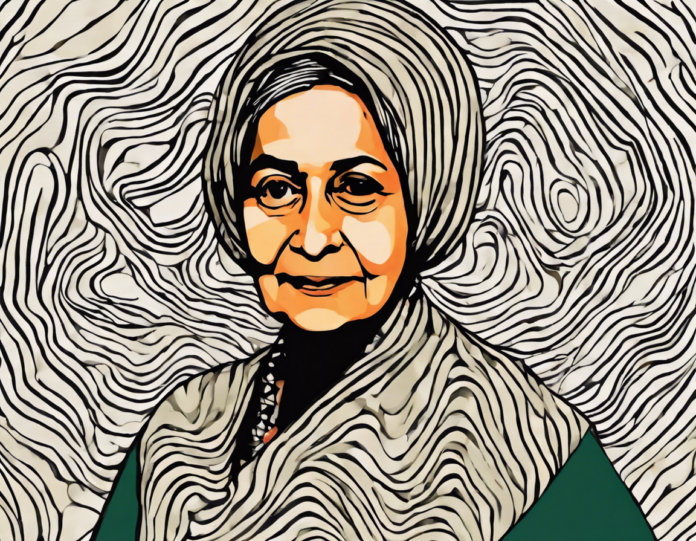Introduction
Hindi literature and culture have long been a source of inspiration for artists across mediums. One such artist who beautifully intertwines her heritage and art is Zarina Hashmi. Born in Aligarh, India, in 1937, Zarina Hashmi is a renowned Indian-American artist known for her minimalist approach to art, focusing on themes of home, displacement, and memory. In this article, we will delve into how Hindi influences have shaped Zarina’s artistry, exploring the themes, techniques, and cultural nuances present in her work.
Zarina Hashmi: A Brief Overview
Zarina Hashmi, often known simply as Zarina, is celebrated for her prints, sculptures, and installations that reflect a deep connection to her roots in India. She draws inspiration from her upbringing, her understanding of Urdu and Hindi, and her experiences of migration and displacement. Zarina’s work often explores the concept of home – both physical and emotional – and the impact of changing landscapes on one’s identity.
Hindi Themes in Zarina’s Art
-
Nostalgia for Home: Zarina’s art is steeped in nostalgia for her native India, a sentiment many can relate to in the diaspora. Through her use of maps, architecture, and geometric patterns, she captures the essence of a lost home, invoking a sense of longing and belonging.
-
Language and Text: Urdu and Hindi script frequently feature in Zarina’s works, adding a layer of meaning and symbolism. The intricate calligraphy, often overlaid on maps or abstract shapes, speaks to the artist’s connection to her linguistic heritage and the power of words to evoke memory and emotion.
Techniques and Mediums
Zarina’s artistic practice is characterized by her meticulous attention to detail and her use of traditional printmaking techniques. Her prints often feature a limited color palette, typically black and white, emphasizing the starkness and simplicity of her compositions. Zarina also experiments with handmade paper, adding texture and depth to her pieces.
Cultural Significance
Zarina’s exploration of Hindi influences in her art serves to highlight the rich cultural tapestry of India and the complexities of identity, belonging, and displacement. Her work resonates with audiences globally, inviting viewers to contemplate their own connections to home, language, and heritage.
FAQs
- What themes does Zarina Hashmi often explore in her art?
-
Zarina Hashmi often explores themes of home, displacement, memory, and identity in her artworks.
-
What is the significance of Urdu and Hindi script in Zarina’s works?
-
Urdu and Hindi script add layers of meaning and symbolism, reflecting the artist’s cultural heritage and the power of language in evoking emotions.
-
What techniques does Zarina employ in her art practice?
-
Zarina Hashmi utilizes traditional printmaking techniques, a limited color palette, and handmade paper to create her distinctive artworks.
-
How has Zarina’s upbringing in India influenced her artistry?
-
Zarina’s upbringing in India has deeply influenced her art, inspiring themes of nostalgia for home, language, and the interconnectedness of culture and identity.
-
What sets Zarina Hashmi apart in the art world?
- Zarina Hashmi’s unique blend of minimalist aesthetics, cultural influences, and personal storytelling sets her apart, making her a revered figure in the contemporary art scene.
In conclusion, Zarina Hashmi’s exploration of Hindi influences in her art offers a profound reflection on the intersections of heritage, memory, and creativity. Through her evocative works, she invites us to embark on a journey of self-discovery and contemplation, bridging the gap between the past and the present, the self and the world.

